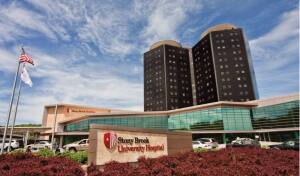by
Lauren Dubinsky, Senior Reporter | August 12, 2016

Stony Brook University
School of Medicine
Stony Brook Medicine and Mount Sinai Health System announced today a partnership to work together on research, academic programs and clinical care initiatives.
"I believe that the opportunities for amazing science to spring from our collaborative efforts are truly boundless," Dr. Kenneth Kaushansky, senior vice president for health sciences and dean of the Stony Brook University School of Medicine, told HCB News. "The possibilities for innovative approaches to clinical care are not just theoretical, they are inevitable."
The institutions will develop a wide range of research programs in the biomedical engineering, computer science, drug discovery, neuroscience, therapeutics and public health fields.




Ad Statistics
Times Displayed: 27697
Times Visited: 616 Stay up to date with the latest training to fix, troubleshoot, and maintain your critical care devices. GE HealthCare offers multiple training formats to empower teams and expand knowledge, saving you time and money
It will bring together Stony Brook's expertise in mathematics, high-performance computing, imaging and physical and chemical sciences and Mount Sinai's strengths in biomedical and clinical research and health policy and outcomes.
High-performance computing and informatics will be used to generate testable hypotheses for which patients are at highest risk for returning to the hospital and who might benefit from more outpatient interventions. They will also create joint experimental learning environments for graduate and professional students.
"The agreement calls for both institutions to invest in pilot studies that promote joint projects, that will lead to large multiple-investigator grants, in drug discovery and medicinal chemistry, imaging, genetics and bioinformatics, population health and many other disciplines," said Kaushansky.
The institutions will invest a combined $500,000 to launch the pilot programs, with the intent to receive collaborative external funding. The projects will be overseen by a committee that includes three representatives from each institution.
"We know that when you bring complementary researchers, educator and clinicians together, the whole is usually greater than the sum of its parts," said Kaushansky. "When the right two institutions are brought together, great things can happen that would not have happened at either institution, alone."
Back to HCB News

